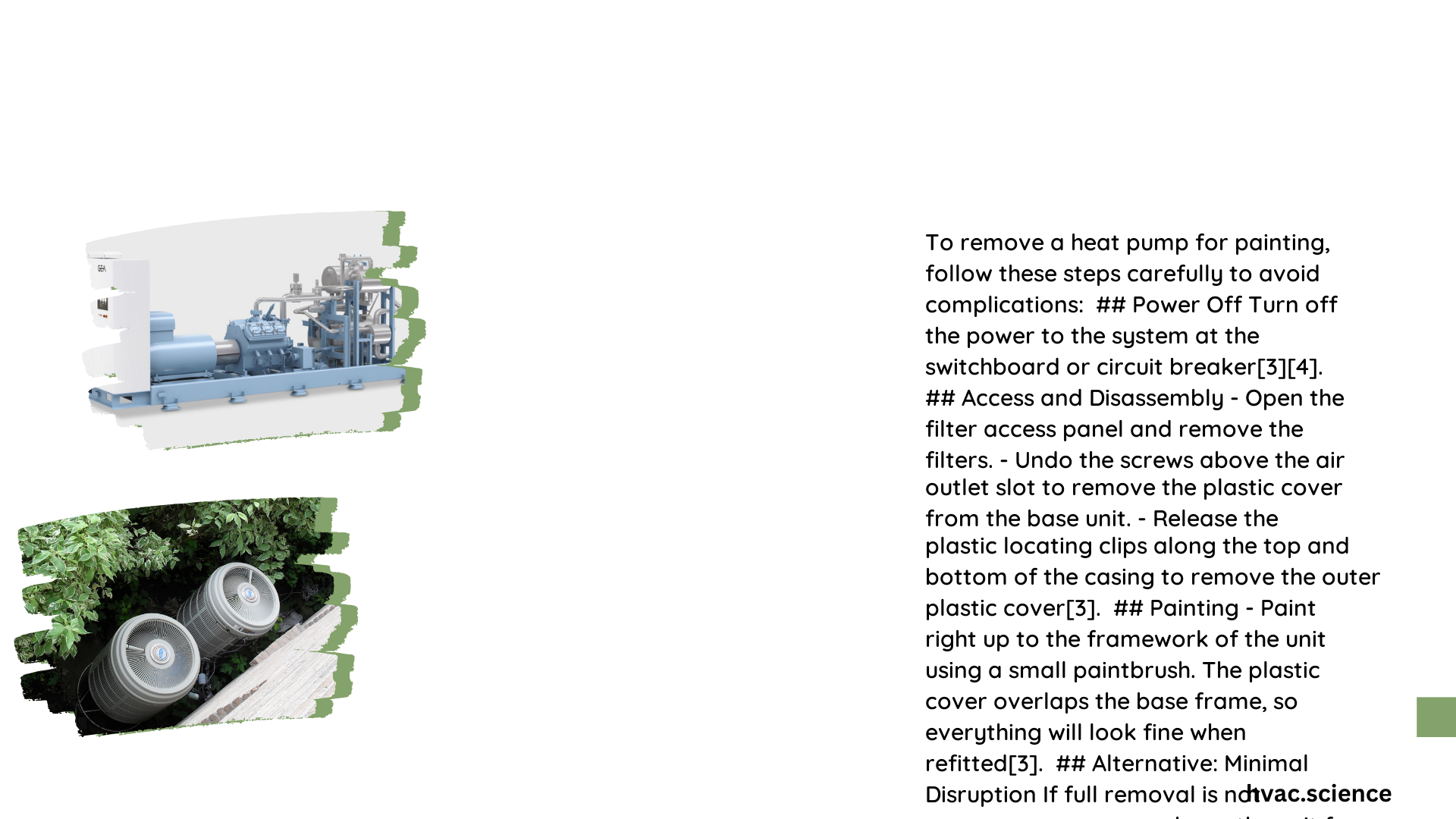Painting a heat pump requires careful preparation and precise execution to maintain the unit’s functionality while achieving an aesthetic upgrade. Homeowners and DIY enthusiasts must follow specific procedures to protect sensitive components, ensure electrical safety, and achieve a professional-looking finish without compromising the heat pump’s performance or warranty.
Why Would You Remove a Heat Pump for Painting?
Heat pumps can become discolored, faded, or aesthetically unappealing over time. Painting provides an opportunity to:
- Refresh the unit’s appearance
- Protect against environmental degradation
- Match the heat pump to exterior home design
- Extend the visual lifespan of the equipment
What Tools Do You Need for Heat Pump Painting?

| Tool Category | Specific Items | Purpose |
|---|---|---|
| Cleaning | Sugar soap, ESP Surface Prep Spray | Surface preparation |
| Protection | Painter’s tape, plastic sheets | Component coverage |
| Painting | Plastic-compatible spray paint | Color application |
| Safety | Protective gloves, safety glasses | Personal protection |
How to Prepare the Heat Pump for Painting?
Electrical Safety Procedures
- Power Disconnection
- Locate the main electrical panel
- Switch off the circuit breaker for the heat pump
- Verify power disconnection using a voltage tester
- Place a temporary warning tag to prevent accidental re-energization
Surface Preparation Techniques
Before painting, thorough surface preparation is crucial:
- Clean the heat pump exterior with sugar soap
- Rinse and allow complete drying
- Apply ESP Surface Prep Spray
- Lightly sand any rough areas
- Wipe down with a lint-free cloth
What Components Need Protection?
Critical components requiring protection include:
- Electrical connections
- Refrigerant lines
- Exhaust ports
- Infrared sensor windows
- Internal mechanical parts
Recommended Protection Methods
- Use high-quality painter’s tape
- Cover sensitive areas with plastic sheeting
- Secure coverings with painter’s tape
- Ensure complete seal against paint overspray
How to Apply Paint Correctly?
Painting Best Practices
- Choose spray paint specifically designed for plastic surfaces
- Select a color matching your exterior design
- Apply multiple thin coats instead of one thick layer
- Maintain consistent 6-8 inch spraying distance
- Allow 15-20 minutes drying time between coats
- Use smooth, overlapping stroke techniques
What Safety Precautions Should You Take?
Personal and Equipment Protection
- Wear protective gloves
- Use safety glasses
- Work in a well-ventilated area
- Avoid painting during high humidity
- Protect surrounding surfaces from overspray
- Follow manufacturer’s specific guidelines
Common Mistakes to Avoid
- Painting without disconnecting power
- Using incompatible paint types
- Applying thick, uneven paint layers
- Neglecting surface preparation
- Painting in direct sunlight or extreme temperatures
Post-Painting Recommendations
- Allow complete drying (24-48 hours)
- Inspect for any paint imperfections
- Carefully remove protective coverings
- Restore electrical connections
- Verify heat pump functionality
Maintenance Tips After Painting
- Clean painted surface periodically
- Touch up any chips or scratches
- Monitor paint adhesion and condition
- Avoid abrasive cleaning methods
Pro Tip: Always consult your heat pump manufacturer’s guidelines before attempting any painting or modification to preserve warranty coverage.
